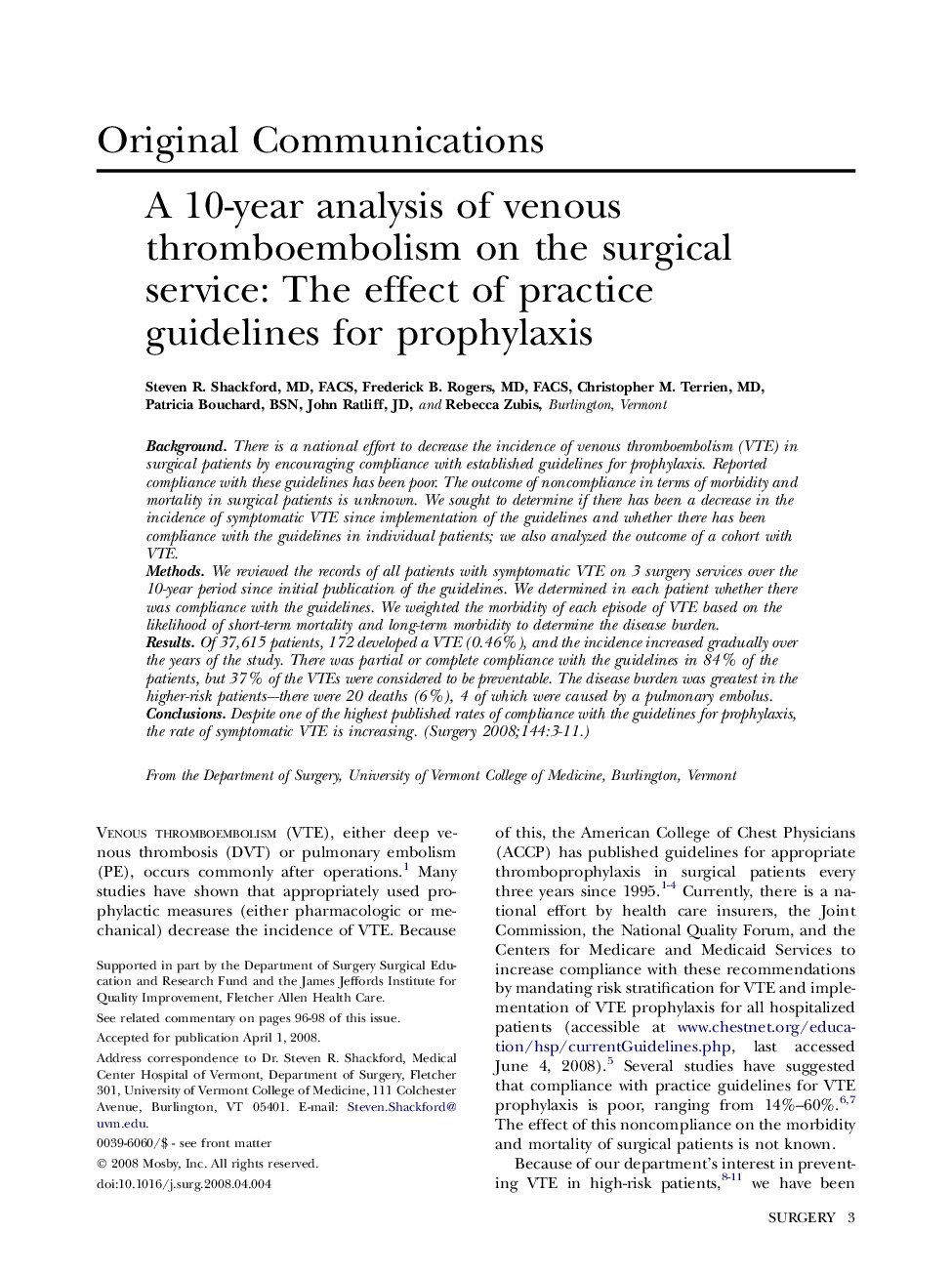| Article ID | Journal | Published Year | Pages | File Type |
|---|---|---|---|---|
| 4309754 | Surgery | 2008 | 9 Pages |
BackgroundThere is a national effort to decrease the incidence of venous thromboembolism (VTE) in surgical patients by encouraging compliance with established guidelines for prophylaxis. Reported compliance with these guidelines has been poor. The outcome of noncompliance in terms of morbidity and mortality in surgical patients is unknown. We sought to determine if there has been a decrease in the incidence of symptomatic VTE since implementation of the guidelines and whether there has been compliance with the guidelines in individual patients; we also analyzed the outcome of a cohort with VTE.MethodsWe reviewed the records of all patients with symptomatic VTE on 3 surgery services over the 10-year period since initial publication of the guidelines. We determined in each patient whether there was compliance with the guidelines. We weighted the morbidity of each episode of VTE based on the likelihood of short-term mortality and long-term morbidity to determine the disease burden.ResultsOf 37,615 patients, 172 developed a VTE (0.46%), and the incidence increased gradually over the years of the study. There was partial or complete compliance with the guidelines in 84% of the patients, but 37% of the VTEs were considered to be preventable. The disease burden was greatest in the higher-risk patients—there were 20 deaths (6%), 4 of which were caused by a pulmonary embolus.ConclusionsDespite one of the highest published rates of compliance with the guidelines for prophylaxis, the rate of symptomatic VTE is increasing.
